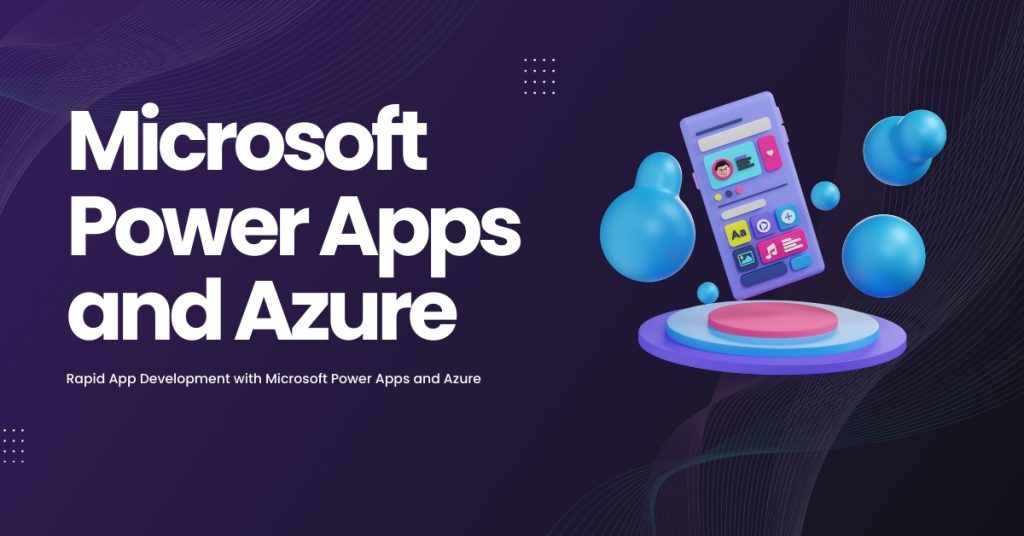
As organizations embrace a new digital world post-pandemic, the enterprise app gap is expected to widen further. According to Microsoft, 86% of organizations face challenges meeting the increasing app demand. The demand for apps is five times the volume that IT teams can typically deliver. Consequently, organizations are turning to low-code development approaches for app modernization. This trend has significantly increased the adoption of Microsoft Power Platform, a comprehensive low-code development platform.
How to Deliver Apps Rapidly
The pandemic brought significant changes to application development. Businesses needed to address customer needs within days to remain competitive, which spiked the demand for professional developers. How does low-code development assist professional developers? It allows them to combine code-first tools with user-friendly platforms like Power Apps to deliver business apps swiftly. Fusion teams, which include citizen developers, can handle simple and complex apps simultaneously. Power Apps and Power Platform stand out for their integration with Azure, Visual Studio, Azure data services, and Azure services.
Professional developers can leverage the Power Platform with tools like Azure Kubernetes and Azure API Management to quickly resolve business challenges.
The Adoption of Azure and Power Apps
Schlumberger, a leading energy services provider, built over 650 applications in 18 months using fusion teams. They established a center of excellence to harness the power of Microsoft Power Apps and Azure for app modernization. Additionally, Schlumberger managed the Covid crisis by building apps in just three hours.
Similarly, Toyota, a leading automobile manufacturer, developed more than 400 apps in a few months utilizing Power Apps, Azure Cognitive Services, and Azure ML. They streamlined communication between 1500+ Lexus and Toyota dealers and production facilities, expanding their fusion team from a few hundred to thousands within months.
Why Choose Azure and Power Apps for App Modernization?
- Build Apps Faster: Power Apps feature a drag-and-drop interface and pre-built UX components, allowing for app deployment across mobile and web with a single click.
- Reduce App Development Costs: Azure offers capabilities like IoT and streaming analytics that integrate with Power Apps, Power Automate, and Power Virtual Agents. Leveraging these, along with ERP extensions, can reduce development costs by up to 74%.
- Application Lifecycle Management: Simplify governance with GitHub and the CoE starter kit, and streamline application lifecycle management with evolving Azure tools.
- Extend Functionalities: With Visual Studio, business users can customize apps while professional developers create reusable components and extend functionalities through Azure API Management.
Exploring Options for App Modernization
- UI/UX Components: Canvas apps are easy to develop with pre-built UI/UX components. While initial loading issues were reported, ongoing updates from Microsoft are improving performance. Tools like browser developer tools, Power Apps monitoring, and code review can enhance performance.
- AI Builder: Embed AI into your apps to enhance customer experience using AI Builder, which leverages Azure AI capabilities and data from Microsoft Teams, Dynamics 365, Office 365, and Dataverse. Pre-built models simplify processes and enable easy AI model deployment without coding.
- Application Lifecycle Management (ALM): With GitHub's built-in CI/CD support, track code changes and shorten development times. The GitHub Azure connector further simplifies CI/CD for citizen developers.
- Governance and Security: As the number of citizen developers grows, governance can be challenging. The CoE starter kit provides guidelines for Power Apps governance, though setup can be costly. Utilize Azure Active Directory for access control and role specifications, and Azure Key Vault for encryption and provisioning.
- Customization: Fusion teams can create complex apps using the CLI in Visual Studio, mixed reality capabilities, portals customization, and Dataverse for data modeling. Azure components like Azure Functions, Cognitive Services, and Synapse Analytics enable app scaling and adding new functions.
- Seamless Connectivity: Organizations of all sizes can empower stakeholders to build low-code apps with data integration through 500+ connectors. Leverage Azure API Management and Azure Functions for custom connectors and internal process productization.
The Impact of Azure and Power Apps
According to Forrester’s total economic impact study, organizations can significantly reduce costs and improve efficiencies by leveraging Azure and Power Apps together:
- 24% reduction in DevOps and professional developer costs
- 94% ROI over three years
- Streamlined application lifecycle management with secure governance
- Comprehensive solutions for enterprise app modernization needs
- Enhanced capabilities with cognitive services, AI, IoT, computer vision, and automation
Our Capabilities
Azure and Power Platform offer enhanced capabilities for fusion teams. At DumpsBoss, we can consider any of your use cases to augment your vision for fusion teams. Additionally, we offer unique solution accelerators to improve your app landscape. Curious? We are just a click away.
Comments (0)